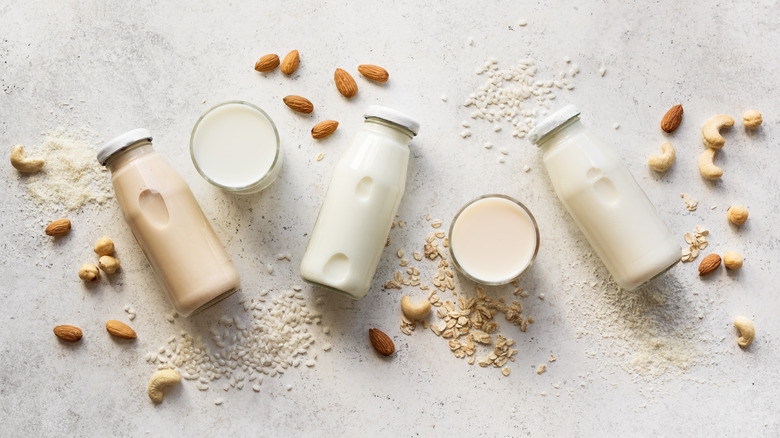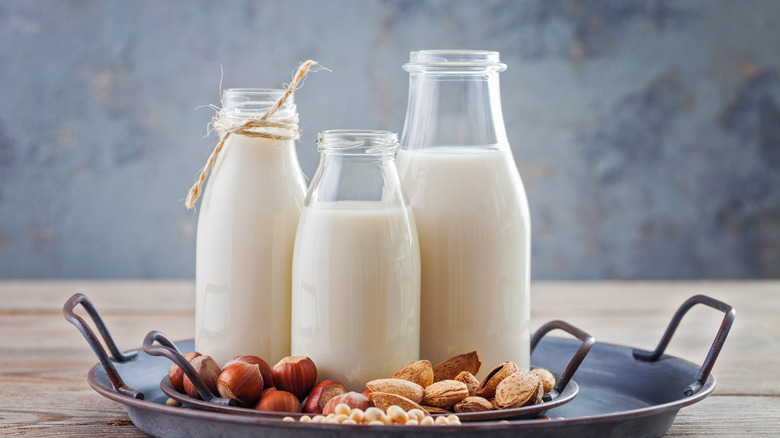Why Dairy Alternatives Are Expected To Spike In Popularity
Recent analysis by researchers MarketsandMarkets predicts that the dairy alternative market will grow substantially in the next five years. It estimates that the dairy alternative market is currently valued somewhere around $27.3 billion and expects it to practically double to $44.8 billion by 2027. Dairy alternatives like almond, oat, or soy milk aren't new in the food world by any means, but it seems non-dairy items are set to continue growing rapidly in the near future. Their overall revenue is also still a fraction compared to the dairy industry however. A separate MarketsandMarkets analysis concluded that the dairy industry was expected to still maintain a market value just shy of $90 billion by 2026, which is a $27 billion increase from 2021.
One interesting quality of MarketsandMarkets' analysis is that it examined the entire dairy alternative market. Instead of limiting its study to dairy alternative milks or beverages, it included other applications and types of dairy substitutes like yogurts and ice creams.
Health benefits are contributing to market growth
According to the MarketsandMarkets analysis, almond-based dairy alternatives are going to be one of the fastest growing markets among dairy alternatives. The analysis notes that one of the reasons for this is the growing understanding of almond's various benefits. According to Healthline, almond milk boasts a wide variety of nutrients. Almond-based beverages are low in carbs, high in Vitamins E and D, and are an excellent source of calcium. In response to its popularity, the almond industry is seeking ways to become more sustainable (per Food Dive).
MarketsandMarkets expects flavored offerings to also grow. It notes that currently the popular flavors for the dairy alternative market are vanilla and chocolate. MarketsandMarkets expects more dairy alternative makers to introduce different flavors based on fruits in the future, which will diversify what's available on shelves. More makers are also introducing products with coconut or oat to lend a creamier consistency to items like yogurt.
According to Morning Consult roughly 1 in 3 Americans drink a non-dairy milk at least once a week. This shows that those who are not on a plant-based diet are choosing to limit their dairy input. Veganism has also become more popular in the United States in recent years. One study from Gallup Poll states that followers of a vegan diet now make up 3% of the country's population. As diversity and quality in the dairy alternative markets grow it's likely more consumers will shift their habits in this way as well.

